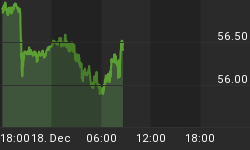In our January 3rd article we cautioned that market breadth has been steadily declining during the second half of 2015 and is negatively diverging from price. This divergence made its presence felt acutely during the first week of 2016, which will go down in history as the worst in market history.
In the first week (four trading days) the DJIA declined 6.19%. In the last 130 years of DJIA history, a 4-day decline at the beginning of the year has occurred only 46 times, and the average decline was only 1.5%. Furthermore, a decline following the first four trading days of the year has correlated with a negative January 50% of the time. However, in those years when January started with a 4-day decline and ended negative for the month, the result was a negative year 70% of the time.
During the same four days the SP500 declined 5.96%, and the QQQ declined 7%. Speaking of the Qs, this is only the eighth time in their history that they managed to register a seven day consecutive decline.
Here's what happened following those rare uninterrupted declines lasting seven days or longer:
7-day decline ending Jan 30, 1990, followed by a 12-day 6.28% rally
7-day decline ending Nov 12, 1997, followed by a 12-day 10.12% rally
8-day decline ending May 18, 2006; the swing bottom came in 3 days later, and the Qs bounced up for 6 days and a 3% gain.
8-day decline ending June 13, 2006, followed by a 2-day rebound and a gain of 3.75%. The market bottomed a month later.
7-day decline ending Sept. 9, 2008, followed by a 2-day rebound, 2.7% gain.
8-day decline ending Oct 10, 2008, followed by a 1-day 12% rebound. The index bottomed a month later on Nov 20th.
11-day decline ending July 2, 2010, followed by a 8-day 7.3% rally
9-day decline ending May 18, 2012, followed by a 6-day 3.37% rally. The index bottomed three days later.
That's a 6-day 6% bounce average.
Since there are some similarities with sentiment and price action in August '15, Monday January 11th is the odds favorite to mark the end of the decline and the start of a rebound.















